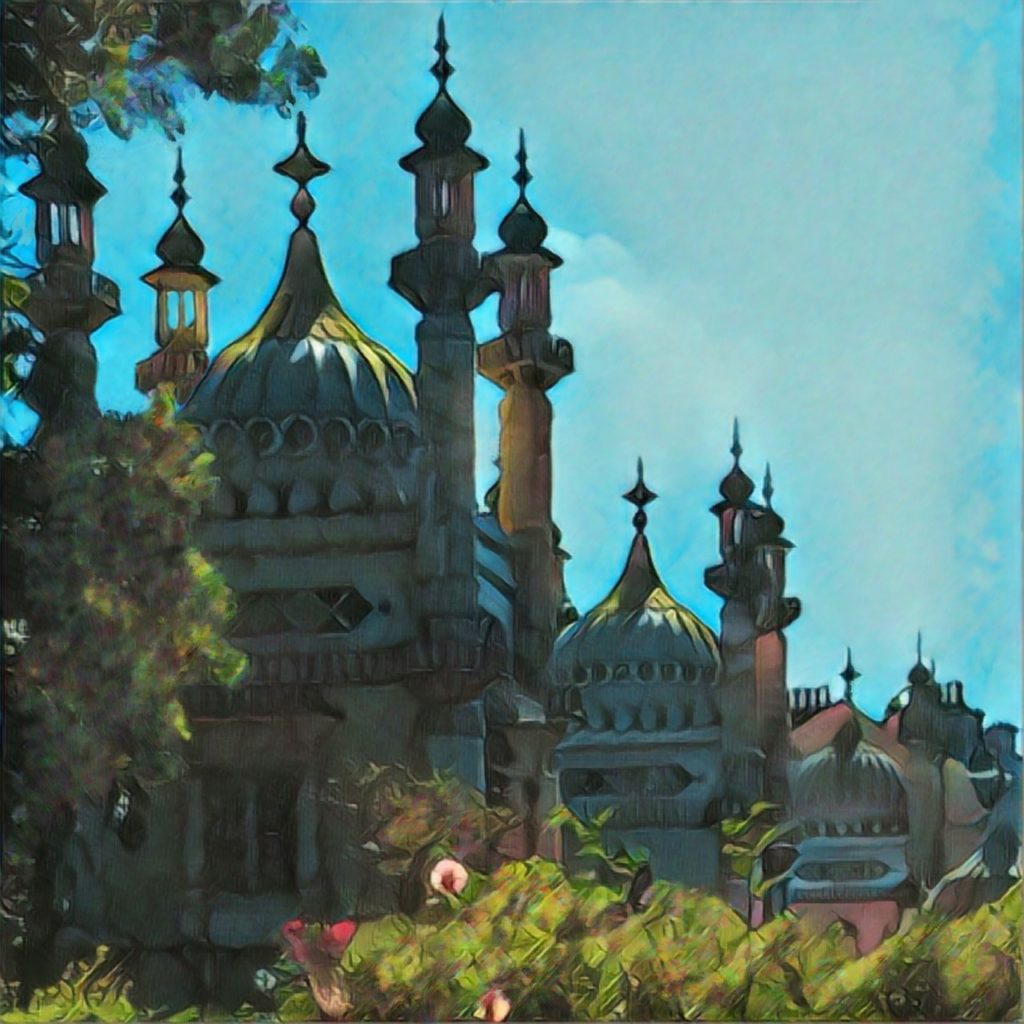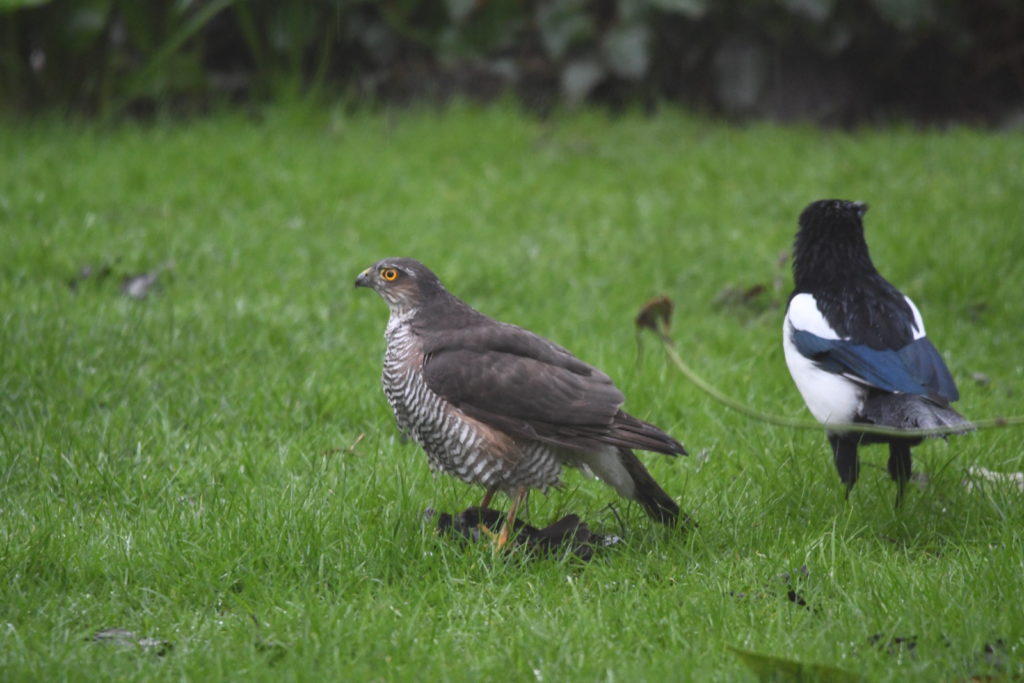
This is a legacy story from an earlier version of our website. It may contain some formatting issues and broken links.
The second of our Nature at Home series of blogs looks at what you might find in your garden or local area, and gives a few ideas of how you might observe them, starting with some very familiar visitors.
Of all the visitors to your garden, birds and mammals are the most obvious as they are easily visible. However, with the exception of some bold characters, these larger animals tend to have a healthy fear of humans or other predators, so will usually move rapidly from one spot to the next.
With patience you can observe these creatures going about their business and sometimes experience unexpected dramas.

Sparrowhawk on starling (taken in authors garden, Feb 2020, using Nikon DSLR with 150 – 600mm telephoto lens, low light)
Though these animals can be very cautious, you’ll have an advantage to those watching animals at the coast or in the countryside. Your home is a ready-made hide with comfy seating, heating and kitchen and bathroom facilities. From behind glass, and with the lights out, most of the garden animals won’t notice you. You can observe the comings and goings of garden birds whilst enjoying your breakfast or a cup of tea. Even if you don’t have a garden, you can still enjoy wildlife from your window. My colleague lives on the first floor, and is without a garden, but looks forward to the return of swifts each spring which she watches screaming and flying at high speed between the rooftops outside her central Brighton window.

Blackbird on neighbour’s roof, March 2016. Taken with Nikon DSLR and 55-300mm lens
This time of year is great for bird watching, especially in Sussex’s coastal location facing Europe. Migratory birds are returning to the UK to breed, and chiffchaffs are some of the earliest arrivals. They can be heard at the tops of trees making a very recognisable chiff-chaff-chiff-chaff call. Other birds such as goldfinches and starlings also tend to perch at the tops of trees or on TV aerials. These are good opportunities to use binoculars if you have them, though be careful where you aim them when pointing at houses. The RSPB have some good tips for choosing binoculars or monoculars.

Chiffchaff taken this March (taken with DSLR with 150 – 600mm telephoto lens)
Our resident birds like blue and great tits are also busily collecting material and checking out sites such as bird boxes for nesting. Blue tits don’t seem to mind their homes being fairly close to humans. If you can, put up a nest-box that can be viewed from indoors and see if anything chooses to nest there. You could even leave some hair from a hairbrush close by for them to use as nesting material. Setting up a birdfeeder within view of your favourite window seat is also a good way to guarantee views of the birds. Feeders are also likely to attract the most common mammal most of us will see, the grey squirrel.

Grey squirrel on bird table, 2014. Taken with entry level DSLR
This is also a good place to focus your camera on, either hand-held or using a tripod. Should you be interested in taking up wildlife photography, there are a number of good blogs online with tips. Two examples are here, but many more can be found online,
The Digital Photography School 5 Top Value Lenses for Getting Started in Wildlife Photography
or if you prefer video Paul Miguel Photography Wildlife Photography for Beginners

Great Spotted Woodpecker on bird feeder. A range of seeds in different feeders can encourage a wider variety of birds. Taken with DSLR and 150 – 600mm telephoto lens
Keeping records of your observations in a notebook or digitally can be of interest to yourself, but if you want to give something back, you can get involved in citizen science. The British Trust for Ornithology’s (BTO) garden birdwatch project and other similar projects allow you to upload your observations and help scientists keep track of UK wild bird populations. In the Sussex Biosphere region, there is also the City Nature Challenge, which encourages you to record what you find in your local area.
Another aspect of having the time to observe these animals is starting to see and appreciate some features you may not have noticed before. There are beautiful iridescent feathers on pigeons, starlings and magpies, which make them a lot more colourful than they initially appear. Close observation of little brown birds can also make you realise that what appears to be a large flock of sparrows can often be a mix of dunnocks, juvenile greenfinch, goldfinch and chaffinch as well. And if you are lucky enough to have small predators visiting, the larger stoat can be identified from a small weasel by the black tip to its tail.

Starling. The iridescence on their feathers is more spectacular than they initially appear. Taken with DSLR and 150 – 600mm telephoto lens)
By observing the movements of the birds in your garden you’ll soon learn where their nest sites are located, even if you never see their nests (please don’t go exploring for the nests – it is a criminal offence to disturb nesting sites as it causes the birds stress). As the season progresses, you’ll also be able to observe juveniles fledging. What could be more pleasing than seeing a family of wrens fledge from the depths of a hedge or half a dozen juvenile blue tits, you’ve watched being fed over the spring, burst from a nest box?

Blue-tit emerging from nestbox. Taken with entry level DSLR and 55-300mm telephoto lens
With the exception of grey squirrels, mammals tend to be much harder to view as they are often very nervous and many are also nocturnal. Most of the common mammal visitors to your garden or neighbourhood can also be very divisive. Foxes, squirrels, rats and mice are the most likely to be seen, and each get varying levels of negative press. Even badgers, which you may be lucky enough to see, have recently suffered culls. The one urban mammal which tends to be liked by all is the hedgehog.

Fox on rear porch, 2019. Taken with DSLR and 50mm lens, night – with flash
The larger mammals can be viewed easily from windows on first or second floors, especially with binoculars. Foxes will happily forage at dusk and during the night under the glow of streetlights. With streets generally empty of people, foxes should be much happier to come out and you may see them more in the early morning or late afternoon light. If you have a welcoming, safe garden, foxes may become comfortable enough to regularly visit, and may even bring their cubs to play in summer. If foxes do visit your garden, observe them with the lights off and sit back from the window, so you are shadowed from their view and avoid scaring them off.
If you have feeding stations for birds, the bird seed is likely to attract rodents like mice and rats. Both will tend to be nocturnal, but if they get used to a regular, safe source of food they may become bold enough to come out during the day. Whilst initially quite fascinating to observe, if these animals are regularly visiting it might be worth making the feeding stations more difficult for non-flying animals to access as mice and rats can quickly reproduce, resulting in large populations. Squirrel-proof feeders and tall bird-tables are usually effective at deterring mice and rats.

Mice on bird table at night. Whilst they may be cute, if this happens it might be good to try and block their access, or stop putting food out for a while. Taken with entry level DSLR and 55-300mm lens at night with flash
Hedgehogs can be encouraged into a garden by providing access at the bottom of fences (only make holes in agreement with neighbours). A healthy garden with lots of invertebrates will be a haven for hedgehogs, as well as birds. It is best not to use slug-pellets in your garden as they will poison both hedgehogs and birds. Hedgehogs tend to be nocturnal so will only be apparent at night. It is difficult to photograph animals at night without more expensive equipment, but if you are curious about your nighttime visitors, wildlife cameras could be set up in your garden (The RSPB sell them)
To photograph these mammals, set up a tripod or stable surface for your camera. This avoids blurry images, as it is likely mammals will be active in low light. The animals will also be moving about so patience is key to get a photograph when they are still. You may be tempted to use a flash, but this will scare all but the boldest animals off. If you have external lights you could try leaving those on so that the animals get used to visiting the feeding stations under light. This will make photographing them much easier (though it will take time for the animals to feel safe enough to linger under the lights). With patience though, images like those below can be achieved – even for beginners using the auto settings on the camera.

Camera and tripod. Recommended for low light conditions, or for monitoring a fixed spot
So next time you’re out see what you can find and if you’re in the Brighton region, why not record those finds in the City Nature Challenge.

Mute Swan photographed on Samsung smartphone, during daily exercise, March 2020

Fox (who felt safe in the garden) sitting outside the conservatory door. Taken on Samsung smartphone, Winter 2019

Squirrel in Toronto, Canada 2008, taken on Kodak bridge camera. Even a basic point and shoot camera can take passable images. Great if you have an old camera in the cupboard for young children to use
Image 11, 12, 13 – Gallery of images taken with basic phone or point and shoot cameras.
All photos (c) Lee Ismail
Lee Ismail, Curator of Natural Sciences and Kerrie Curzon, Collections Assistant
More information
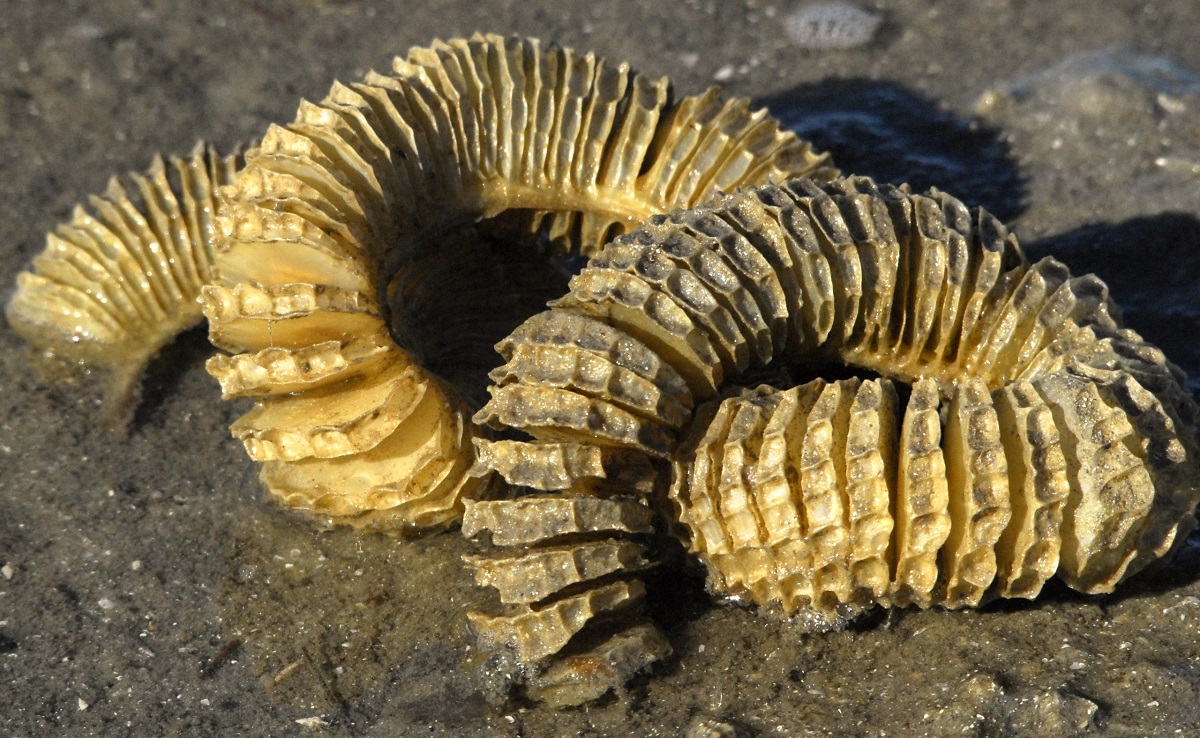



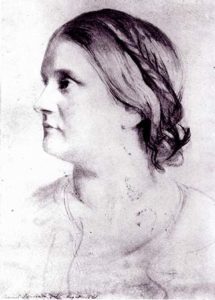
















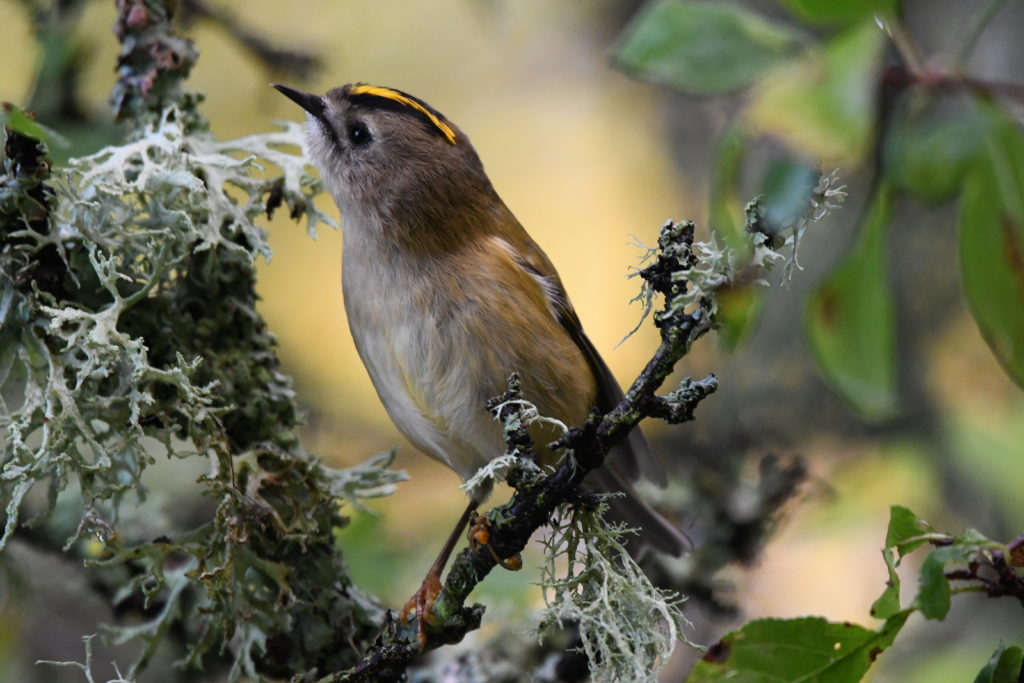



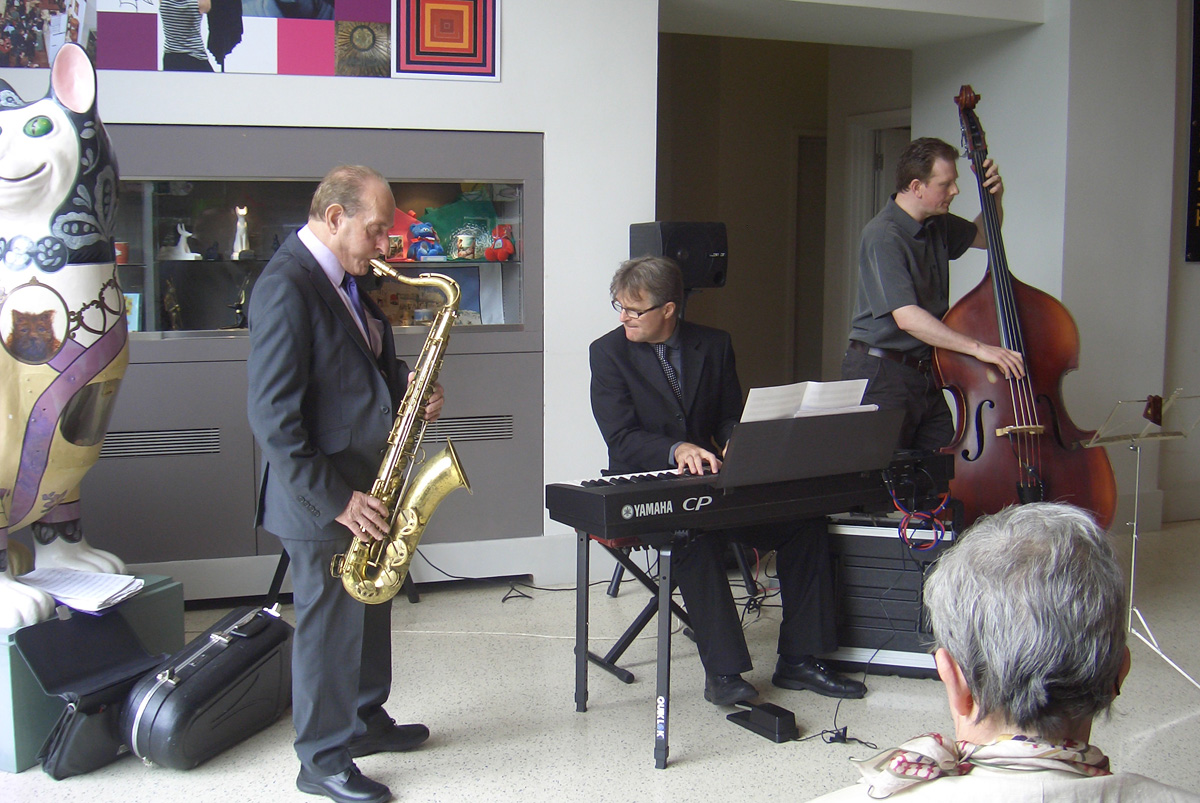






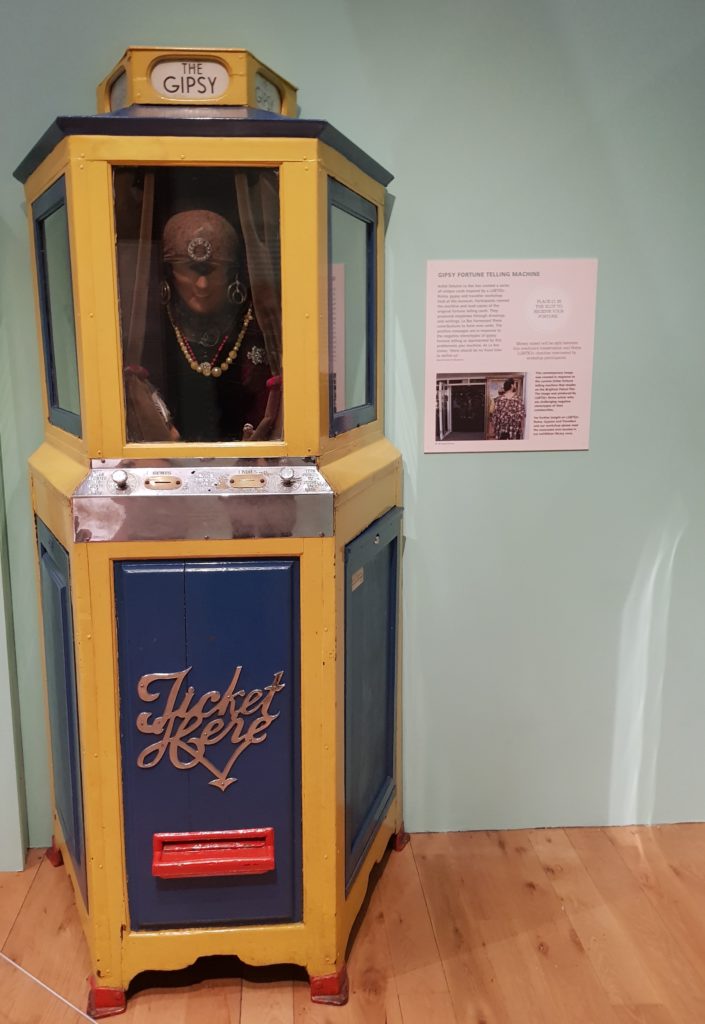



 These activities are suitable for any age as your design can be as complicated or as simple as you want to make it. Very young children will enjoy the sticking, but will need help using scissors.
These activities are suitable for any age as your design can be as complicated or as simple as you want to make it. Very young children will enjoy the sticking, but will need help using scissors.








